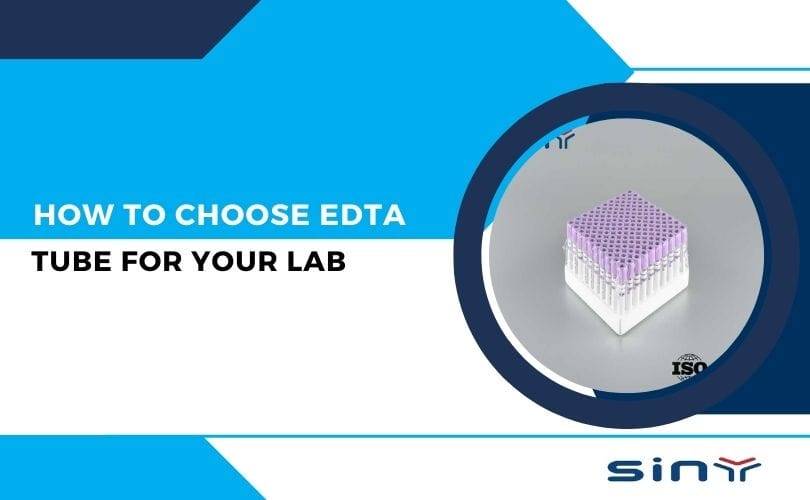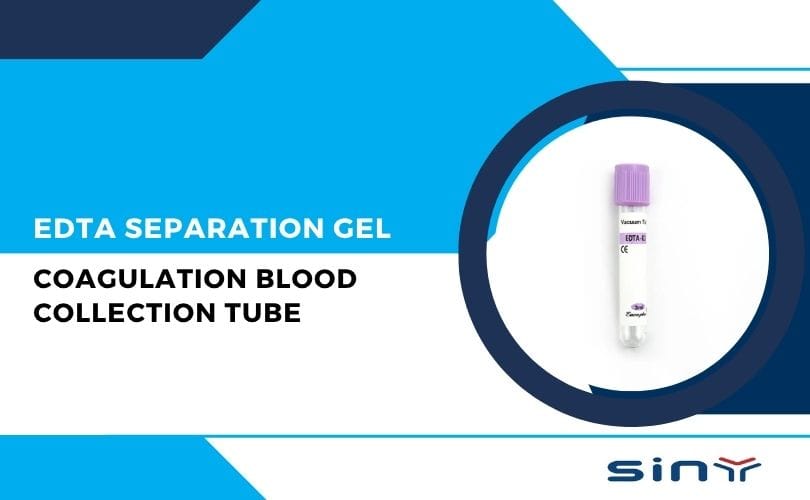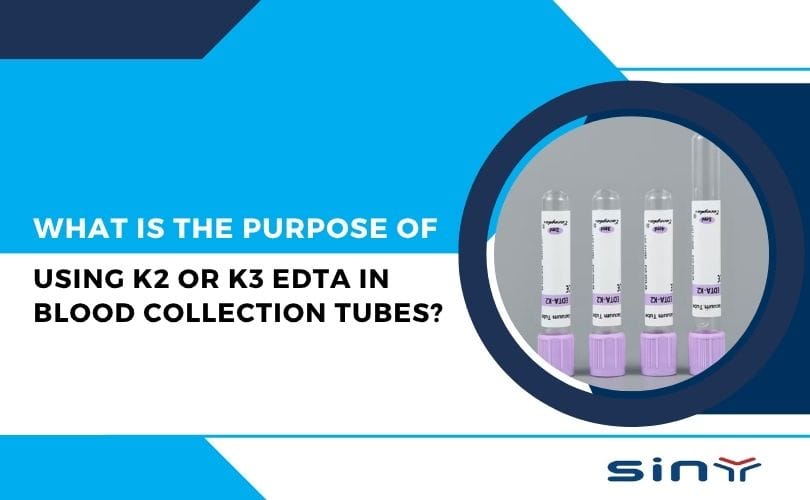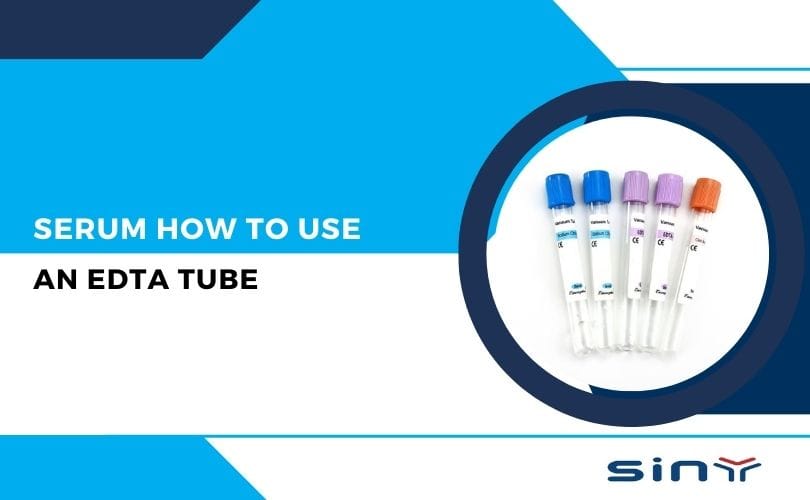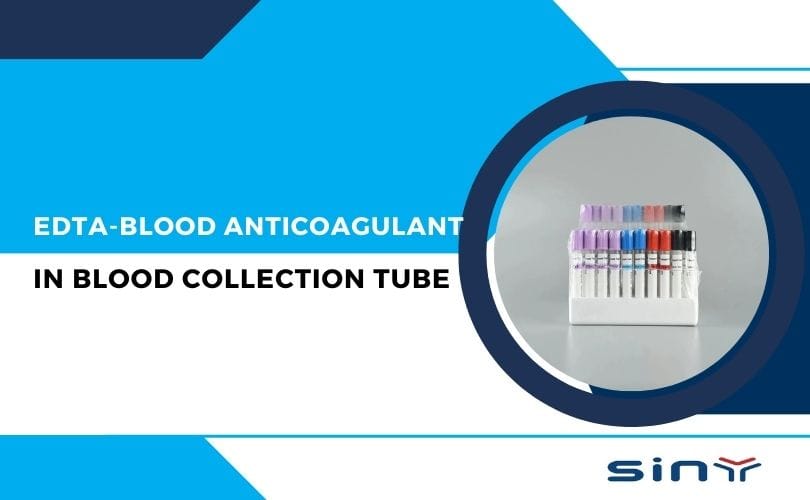Blood collection tubes are critical tools in medical diagnostics, ensuring accurate and reliable test results. Among the most commonly used are EDTA tubes and heparin tubes, each designed for specific laboratory applications. This blog explores the differences, uses, and advantages of EDTA tubes and heparin tubes, helping you understand their roles in medical testing. Whether you’re a healthcare professional or simply curious about blood collection, this guide provides in-depth, research-backed insights to clarify how these tubes function and why they matter.
For high-quality blood collection solutions, explore the range of products at EDTA Tube and Siny Medical.
What Are Blood Collection Tubes?
Blood collection tubes are specialized containers used to collect, store, and transport blood samples for diagnostic testing. These tubes contain additives or anticoagulants to preserve the sample and prevent clotting, ensuring accurate results. EDTA tubes and heparin tubes are two of the most widely used types, each with unique properties suited to specific tests.
At EDTA Tube, you can find a variety of blood collection tubes, including the popular purple top blood collection tube, designed for specific diagnostic needs.
Understanding EDTA Tubes
EDTA tubes, identifiable by their purple or lavender tops, contain Ethylenediaminetetraacetic acid (EDTA), an anticoagulant that binds calcium ions in the blood to prevent clotting. This makes them ideal for tests requiring whole blood or plasma, such as hematology studies.
How EDTA Tubes Work
EDTA works by chelating calcium, a key component in the blood clotting process. By binding calcium, EDTA ensures the blood remains in a liquid state, preserving the cellular components for analysis. This is particularly important for tests like complete blood counts (CBC), where accurate cell counts are essential.
Common Uses of EDTA Tubes
Complete Blood Count (CBC): Measures red blood cells, white blood cells, and platelets.
Blood Smear Analysis: Evaluates cell morphology.
Hemoglobin and Hematocrit Testing: Assesses oxygen-carrying capacity and blood volume.
DNA Testing: EDTA tubes are suitable for genetic analysis due to their ability to preserve DNA integrity. Learn more about EDTA tubes for DNA testing.
For detailed information on EDTA tube applications, visit EDTA Tubes for Blood Collection.
Advantages of EDTA Tubes
Preserves Cell Morphology: Ideal for hematology, as cells remain intact for accurate counts.
Versatile Sizing: Available in various sizes to suit different testing needs. Check out EDTA tube sizes and uses for more details.
Stable for DNA Testing: Ensures reliable results for genetic and molecular studies.
Limitations of EDTA Tubes
Not Suitable for Coagulation Tests: EDTA’s strong chelating properties interfere with clotting factor analysis.
Limited Storage Time: Blood in EDTA tubes has a specific storage duration. Learn more at How Long Blood Can Be Stored in EDTA Tubes.
Explore high-quality EDTA tubes at EDTA Tube.
Understanding Heparin Tubes
Heparin tubes, typically with green tops, contain heparin, an anticoagulant that inhibits thrombin formation, preventing blood clotting. Heparin is widely used in clinical chemistry and other tests requiring plasma.
How Heparin Tubes Work
Heparin prevents clotting by enhancing the activity of antithrombin, which inhibits thrombin and other clotting factors. This makes heparin tubes ideal for tests requiring plasma without cellular interference. For a variety of heparin tube options, visit Siny Medical’s Heparin Tube Collection.
Common Uses of Heparin Tubes
Blood Gas Analysis: Measures pH, oxygen, and carbon dioxide levels.
Electrolyte Testing: Assesses sodium, potassium, and other electrolyte levels.
Metabolic Panels: Includes tests like liver and kidney function panels.
Therapeutic Drug Monitoring: Ensures accurate measurement of drug levels in plasma.
For more details, check out Siny Medical’s Heparin Tube.
Advantages of Heparin Tubes
Rapid Plasma Separation: Heparin allows quick centrifugation to obtain plasma.
Wide Range of Tests: Suitable for chemistry and metabolic studies.
Minimal Interference: Does not significantly affect most biochemical assays.
Limitations of Heparin Tubes
Not Ideal for Hematology: Heparin can alter cell counts and morphology.
Short Shelf Life for Some Tests: Certain analytes may degrade faster in heparinized plasma.
For more information on heparin tubes, watch educational videos on Siny Medical’s YouTube Channel.
Comparing EDTA Tubes and Heparin Tubes
To better understand the differences, let’s compare EDTA tubes and heparin tubes across key factors:
Feature | EDTA Tubes | Heparin Tubes |
|---|---|---|
Anticoagulant | EDTA (chelates calcium) | Heparin (inhibits thrombin) |
Tube Color | Purple/Lavender | Green |
Primary Use | Hematology, CBC, DNA testing | Clinical chemistry, blood gas analysis, metabolic panels |
Sample Type | Whole blood or plasma | Plasma |
Storage Stability | Stable for hematology; limited for some tests (Learn more) | Suitable for immediate plasma separation |
Interference | Not suitable for coagulation tests | May affect some hematology tests |
Common Tests | CBC, blood smears, DNA analysis | Electrolytes, blood gases, liver/kidney function |
For a wide selection of both tube types, visit EDTA Tube’s Products or Siny Medical’s Heparin Tube Collection.
Key Differences in Mechanism
EDTA Tubes: Bind calcium to prevent clotting, preserving cellular structure for hematology and DNA testing.
Heparin Tubes: Inhibit thrombin to produce plasma quickly, ideal for biochemical assays.
Choosing the Right Tube
Selecting between EDTA tubes and heparin tubes depends on the test requirements:
Choose EDTA tubes for hematology or genetic testing (EDTA Tubes for Blood Collection).
Opt for heparin tubes for chemistry-based tests requiring plasma (Siny Medical Heparin Tubes).
For bulk orders or inquiries, contact EDTA Tube.
Practical Applications in Medical Settings
Both EDTA tubes and heparin tubes play vital roles in medical diagnostics, but their applications differ based on the clinical context.
EDTA Tubes in Practice
In hematology labs, EDTA tubes are the gold standard for CBC tests, which are among the most common diagnostic procedures. They are also critical for blood banking and DNA analysis. For example, the purple top blood collection tube ensures reliable results for genetic testing.
Heparin Tubes in Practice
Heparin tubes are indispensable in emergency settings, such as intensive care units, where rapid plasma analysis is needed for blood gas or electrolyte testing. Their ability to provide plasma quickly makes them ideal for time-sensitive diagnostics.
For high-quality heparin tubes, explore Siny Medical’s offerings.
Storage and Handling Considerations
Proper storage and handling are crucial to maintaining sample integrity for both EDTA tubes and heparin tubes.
EDTA Tube Storage
Temperature: Store at 2–8°C for most tests to preserve sample quality.
Time Limit: Blood in EDTA tubes is stable for up to 24–48 hours for CBC tests. For DNA testing, stability may extend longer. Learn more at How Long Blood Can Be Stored in EDTA Tubes.
Handling: Gently invert the tube 8–10 times after collection to mix the anticoagulant.
Heparin Tube Storage
Temperature: Refrigerate at 2–8°C if not processed immediately.
Time Limit: Plasma should be separated within 4–6 hours for most tests to avoid analyte degradation.
Handling: Invert the tube 8–10 times to ensure proper mixing.
For reliable blood collection solutions, visit EDTA Tube or Siny Medical.
Safety and Quality Standards
Both EDTA tubes and heparin tubes must meet strict quality standards to ensure patient safety and accurate results. Reputable suppliers like EDTA Tube and Siny Medical adhere to ISO and CE standards, ensuring high-quality, sterile tubes.
Tips for Choosing a Supplier
Certifications: Look for ISO 13485 and CE-marked products.
Variety: Ensure the supplier offers a range of tube sizes and types. Explore EDTA Tube Sizes and Uses.
Reliability: Choose trusted brands like Siny Medical for consistent quality.
Cost and Availability
Both EDTA tubes and heparin tubes are widely available and cost-effective, with prices varying based on volume and supplier. For bulk purchasing, check EDTA Tube’s Products or Siny Medical’s Heparin Tube Collection.
Summary
EDTA tubes and heparin tubes serve distinct but complementary roles in medical diagnostics. EDTA tubes, with their purple tops, are ideal for hematology and DNA testing due to their ability to preserve cellular structure. Heparin tubes, with green tops, excel in clinical chemistry and rapid plasma-based tests. Understanding their differences—anticoagulant mechanisms, test applications, and storage requirements—ensures accurate diagnostic outcomes.
For high-quality blood collection tubes, explore EDTA Tube and Siny Medical. For further inquiries, contact EDTA Tube.
Frequently Asked Questions
1. What is the main difference between EDTA tubes and heparin tubes?
EDTA tubes use EDTA to chelate calcium, making them ideal for hematology and DNA testing, while heparin tubes use heparin to inhibit thrombin for plasma-based chemistry tests.
2. Can EDTA tubes be used for DNA testing?
Yes, EDTA tubes are suitable for DNA testing due to their ability to preserve DNA integrity. Learn more at Can EDTA Tubes Be Used for DNA Testing?.
3. Are heparin tubes suitable for hematology tests?
No, heparin tubes are not ideal for hematology as they may alter cell counts. EDTA tubes are preferred for such tests.
4. How long can blood be stored in EDTA tubes?
Blood in EDTA tubes is stable for 24–48 hours for most hematology tests. For detailed storage guidelines, visit How Long Blood Can Be Stored in EDTA Tubes.
5. Where can I purchase high-quality blood collection tubes?
You can find reliable EDTA tubes at EDTA Tube and heparin tubes at Siny Medical. For bulk orders, visit Siny Medical’s Heparin Tube Collection.
6. How do I choose between EDTA and heparin tubes?
Choose EDTA tubes for hematology or DNA testing and heparin tubes for chemistry or blood gas analysis. For specific tube options, check EDTA Tubes for Blood Collection or Siny Medical’s Heparin Tubes.
For more educational content, visit Siny Medical’s YouTube Channel or explore products at Siny Medical.


